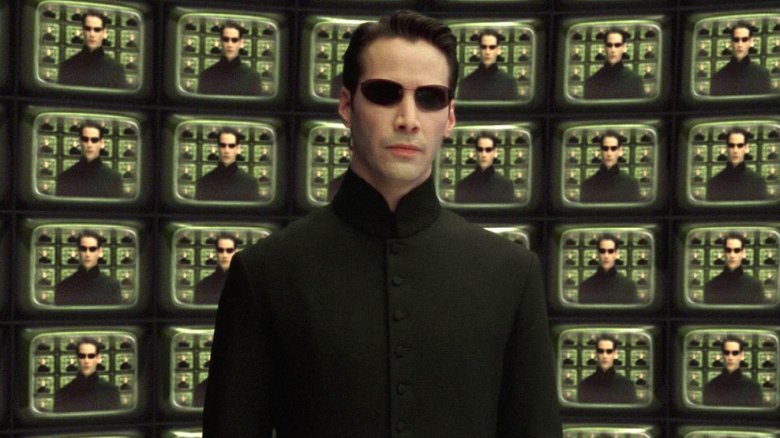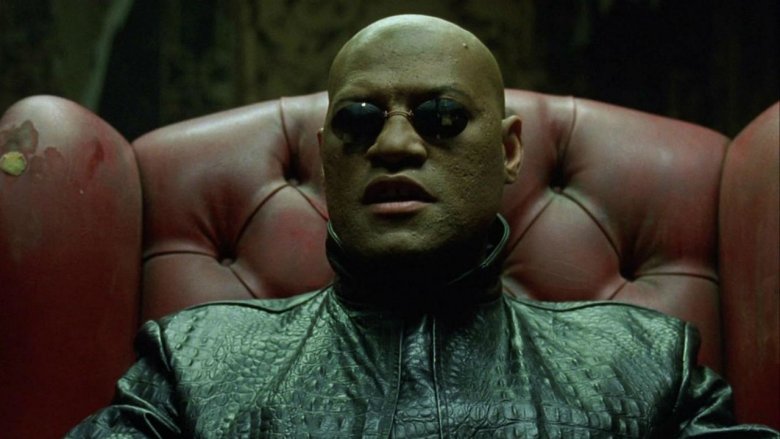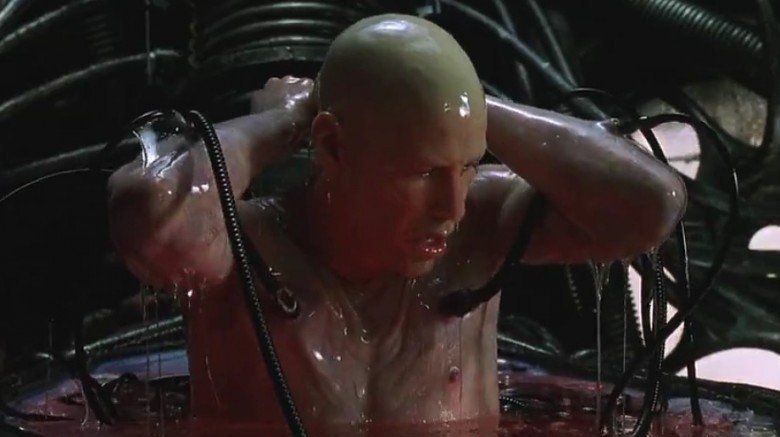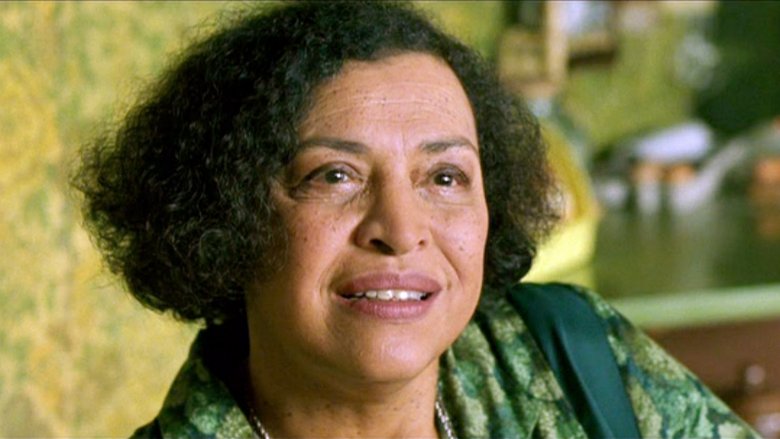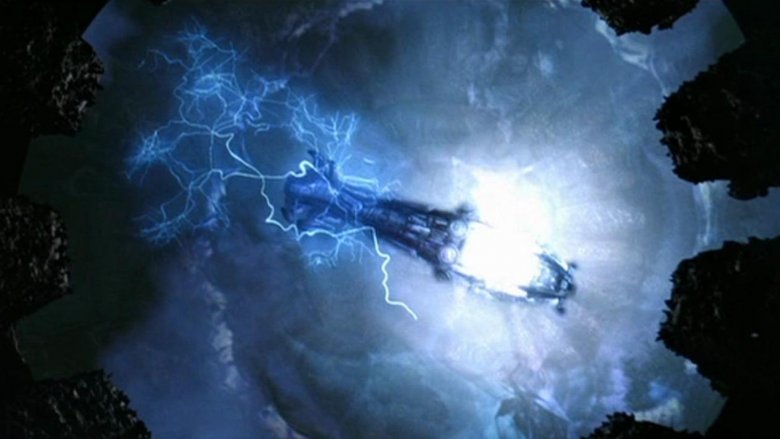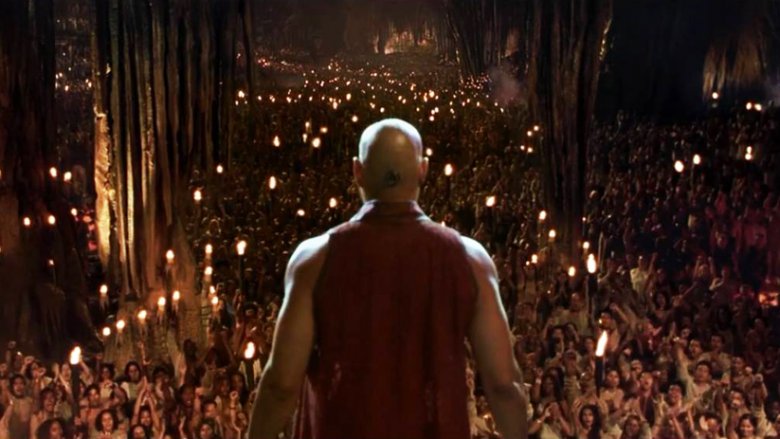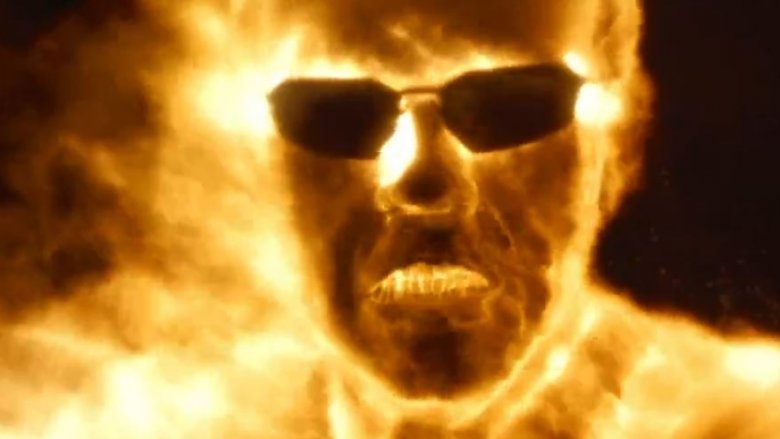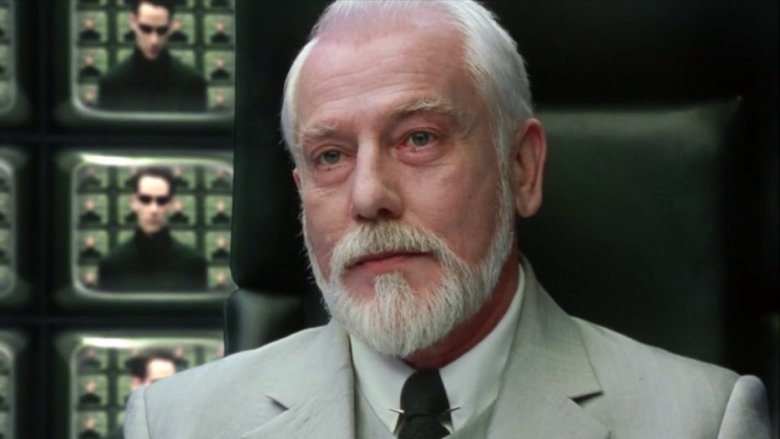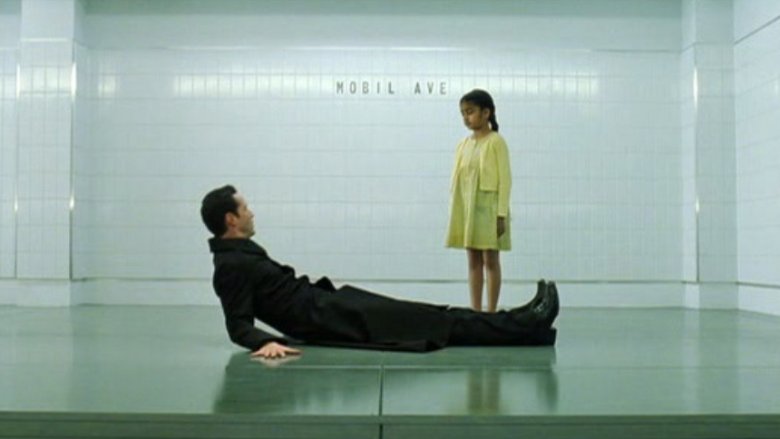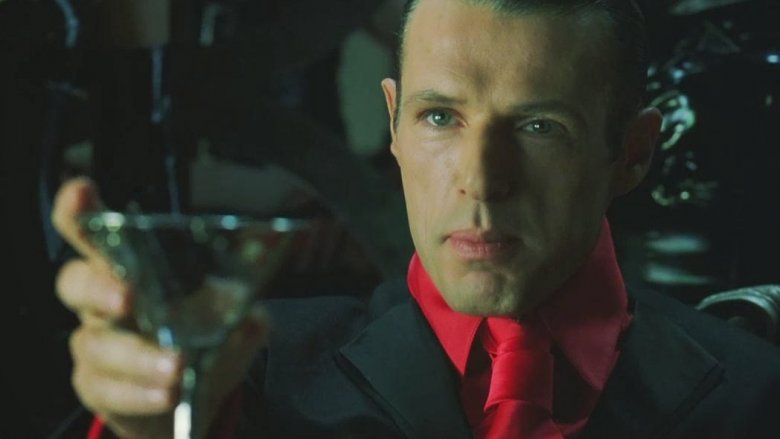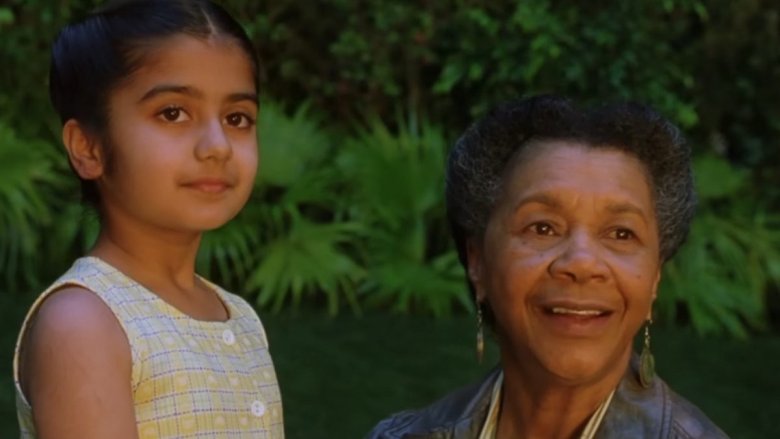The Most Confusing Moments In The Matrix Trilogy Explained
Two decades ago, we were introduced to The Matrix, a sci-fi film created by the Wachowskis that would prove to be one of the most influential genre stories of its generation. The series imagines a future in which humanity has been enslaved to be a power source for a vast Machine civilization, and the titular Matrix exists only as a simulation to keep our brains occupied while our bodies are nothing but fuel for our subjugators. Into this dark future, a chosen one emerges with the power to seemingly change everything and save the human race.
The first Matrix film sets up that narrative while also proving to be an effective delivery system for amazing kung fu fights and gun battles. From there, things get complicated, and The Matrix trilogy expands to paint a complex picture of free will vs. programming in a world most human beings don't even know is fake. Even now, nearly 20 years after the final film in the trilogy, some fans are still scratching their heads over various elements of this complicated mythology. So, as The Matrix heads into a new era with a fourth film on the way, we're here to help. Here are the most confusing moments in The Matrix trilogy explained.
How does Morpheus know Neo is the One?
The Matrix primarily takes place from Neo's point of view, and in his world, he's just a random guy who happens to be a really good hacker until he's contacted by Morpheus, pulled out of the Matrix, and told he's "the One." Morpheus seems to believe Neo is his man with absolutely certainty, but what the film never tells us is how he knows Neo is the One.
The short answer is that it doesn't matter to the story, because we're meant to experience it from Neo's perspective as someone coming to terms with the news that he's a messiah. How we arrive there doesn't matter as much because Neo wasn't there for that part. But if we really want to dig deeper, the film makes it clear through action that Morpheus, in addition to being a leader of the resistance, is an expert hacker. And it also makes it clear that Neo has gained a reputation as someone who seems to question the nature of his reality. Neo has also heard of Morpheus before and has expressed curiosity about him in the past. Therefore, it's likely that Morpheus had been observing Neo for some time before the events of the film, and that — in consultation with the Oracle — he came to the conclusion that Neo was the man he was looking for. Morpheus did the legwork. It's just legwork we don't get to see on the screen.
Why don't the Machines use a different power source in The Matrix?
In The Matrix, Neo explains to Morpheus that the Matrix exists as a simulation to occupy the minds of humanity and make them think that they're living a normal life out in what we perceive as a normal version of planet Earth. In reality, the Matrix exists because the Machines have enslaved all of humanity for the purposes of power. Humans are living batteries, kept alive in pods in vast farming complexes to supply energy to the Machine civilization. This, of course, begs an important question: Why don't the Machines try to find other sources of power?
As Morpheus also explains in The Matrix, humans "scorched the sky" during their war with the Machines, because at the time, the Machines were a race primarily dependent upon solar power. And since the polluted skies of Earth make it impossible for the machines to feed on the sun, they use the humans as a new power source. But what about fossil fuels or hydroelectric power? Well, The Matrix takes place at some point in the future, so it's possible the machines simply used up the remaining fossil fuel. As for water and wind power, those means could have been crippled by the permanent loss of the sun and the change to Earth's ecosystem. Even if they weren't, though, who's to say the Machines haven't tried those in the past or are still trying them now? The Machine world is vast. They might use more than one power source.
Why does the Oracle tell Neo he's not the One?
After freeing Neo from his pod, Morpheus takes him to meet the Oracle, a prophet with a thing for baking cookies and smoking cigarettes. The Oracle spends a little time alone with Neo before basically telling him that he's not the One. The thing is, Neo is the One. That's established firmly by the end of the film, and the Oracle is supposed to know everything, so why does she steer Neo wrong?
If you look at the scene in detail, Neo is actually the one who says the words, "I'm not the One." And the Oracle replies by saying, "Sorry, kid. You got the gift, but it looks like you're waiting for something." Shaken by the news, Neo presses her for more details, and that's when the Oracle begins to tell him about the importance of Morpheus to the resistance movement, and how much Morpheus believes in him, to the point that she's sure one of them will die as a result of Morpheus' convictions. This inspires Neo to stay close to Morpheus and to rise to the occasion of saving his life at the end of the film, at which point his powers as the One begin to fully bloom.
So, the Oracle always knew Neo was the One, but she judged him as someone who wasn't ready to hear that. He needed to have faith in himself first. Plus, he needed to be willing to sacrifice his life for others. By telling him what she did, the Oracle pointed Neo in the right direction.
Why don't the humans use EMPs as offensive weapons?
In the Matrix franchise, the human resistance movement is forced to live underground in a single, seemingly hidden city, with limited resources and weapons. However, one of these weapons is especially effective in the war against the Machines. We're talking about a device that generates an electromagnetic pulse (EMP) that knocks out any electronic equipment in the vicinity. These devices are used to great effect as defensive weapons that allow humans to neutralize nearby Machines as a last resort to live and fight another day (or another hour), so why don't the humans start using them offensively?
Well, for one thing, EMPs have drawbacks. They knock out the machines, but they also kill any electronic equipment the humans are using, including their hovercrafts and computers. This means no one can be jacked into the Matrix when an EMP is used, or they'll die in the process. For another, there are simply too many Machines to make offensive use of EMPs practical. Their effect is only temporary, and even if every human hovercraft launched a full assault on the Machine City, they'd barely reach the outskirts before having to activate every EMP they had at once to defeat the first wave of Machine sentinels. Another wave would surely follow, and they'd be overrun.
Why does Zion exist at all in The Matrix trilogy?
In the world of The Matrix, Zion is the last human city, an underground refuge where the resistance movement is headquartered and the human race continues to work to preserve its culture, while also repopulating as much as possible. Every resistance mission is launched from there, and hundreds of thousands of people live in freedom while they work for a way to wipe the Machines out entirely.
Meanwhile, the Machines have clearly put various systems in place to counteract human resistance, from Agents to Sentinels, and their resources are vast. So shouldn't Zion already be destroyed? Why is it allowed to exist at all in this world?
As the Architect explains in The Matrix Reloaded, Zion is allowed to exist by the Machines, because the concept of resistance centered around the prophecy of the One is a Machine creation generated to make humans resisting the Matrix feel like they have a choice, even though the concept of resistance is ultimately rendered futile by the cyclical nature of the One's programming. In the eyes of the Machines, Zion is a necessary evil that must exist so the Matrix can persist and their key source of power, subdued humans, can remain in place.
How can Agent Smith get into the real world?
In The Matrix Reloaded, Agent Smith shows an immense power to copy himself onto others within the Matrix, creating a sizable clone army. He then expands that ability to the real world when he possesses the resistance member Bane via a phone line. Smith then exists in the real world through Bane's body, but how is that possible?
Well, Smith is a computer program, created by the Machines as an enforcer within the Matrix, who's been freed via Neo's attempt to destroy him in the first film. So in the first movie, Smith is basically an antivirus program. However, in the last two movies, he essentially becomes a software virus himself, able to replicate and spread through contact.
As for the humans living in the Matrix, they're created by the Machines and designed to receive software through the ports built into their flesh, and the resistance fighters are able to take advantage of this by jacking in via phone lines. In this world, phone lines transmit the coding that allows the characters to perceive the Matrix in their brains. Smith is basically using that same principle to transmit his own code into Bane's brain, possessing him. As for how he can survive in there without a connection, well, these humans have certain tech built into them. That's how the Machines make the illusion of the Matrix persist, and how the resistance does things like teach themselves martial arts via software, so Smith is basically just hijacking that innate stuff for his own nefarious purposes.
What's the point of the confusing Architect scene?
In The Matrix Reloaded, Neo meets the Architect, the program that designed the Matrix, and the two have a lengthy conversation about what's going to happen next. For many fans both when the film came out and now, this scene sort of grinds the movie to a halt. After all, the Architect is a deliberately humorless, analytical being who speaks ... well, like a computer program might speak, using precise and very dry language to lay out the two paths Neo might take. So, what's the Architect really trying to say?
It's a little complicated, but it breaks down like this. The resistance movement isn't an entirely human creation. The prophecy of the One was generated by the Machines, and the resistance is allowed to persist, because of an anomaly in which a small percentage of the population rejects the Matrix as their true reality. By allowing a human resistance movement, the Architect can course correct this by creating the illusion of choice. The One is also a Machine creation and contains a special code that reboots the Matrix each time he returns to the Source, continuing the cycle of human subjugation.
The Architect explains this to Neo and gives him a choice. He can go to the Source and be given the opportunity to repopulate Zion and restart the cycle, or he can save Trinity and, by extension, kill the human race. Neo chooses Trinity, and his love for her introduces a new variable that the Architect did not foresee, leading to the events of Revolutions.
Why is Neo in a train station?
At the end of The Matrix Reloaded, Neo manifests a new power by neutralizing several Machines with his mind in the real world, but he falls into a coma immediately afterwards. At the beginning of The Matrix Revolutions, Neo's body in the real world is still in a coma, but his Matrix form wakes up in a subway station where Rama-Kandra and his family are waiting. Rama-Kandra explains that the train station, which they can only leave on the Trainman's train, is a kind of limbo, a waypoint for rogue programs being smuggled into the Matrix by the Merovingian to avoid deletion by the Source. So how did Neo get there?
The Oracle explains in Enter the Matrix that, when he lashed out at the Machines, Neo unwittingly touched the Source (the Machine nexus where programs go when they're deleted), but rather than dying, he entered a state of limbo instead. That's not the most concrete explanation ever, but at least it explains why Neo's body and mind were separated, and why he's in a comatose state, even if it doesn't necessarily tell us why he's in that exact version of limbo.
What happens to the rogue programs when the Matrix reboots?
In The Matrix Reloaded, the Oracle explains to Neo that the Matrix is full of rogue programs who refused to go back to the Source for deletion when they were intended to, and instead, they live a somewhat hidden life, often pursuing various criminal enterprises or simply trying to survive because they like existing. These include the Merovingian, his Twin enforcers, the Trainman, the Keymaker, and many others.
At the end of The Matrix Revolutions, the Matrix is rebooted after Neo fulfills his end of the bargain with the Machines and defeats Smith by sending him back to the Source, so what does that reboot mean for all of those rogue programs?
The short answer is actually not much. While Smith and all traces of him were seemingly deleted at the end of the film, we see the rogue program Sati still alive at the exact moment of the reboot, and The Matrix Online later reveals that characters like the Merovingian are also still alive and doing their thing. In fact, the Merovingian remains one of the oldest programs in the Matrix, which suggests that he's survived multiple reboots. So, rebooting doesn't necessarily mean cleaning up everything. Historically, it was usually about the Machines trying to repeat the cycle of human subjugation, and at the end of Revolutions, it signals a fresh start for humans more than it does the Matrix.
Why does the Oracle think they'll see Neo again at the end of The Matrix trilogy?
In The Matrix Revolutions, Neo realizes that Agent Smith has become too powerful for the Machines to defeat, and so he strikes a deal with the robotic overlords, offering to take care of Smith once and for all. The machines agree, and Neo uses Smith's obsession with him to launch a fight. He then allows Smith to try to copy him while he's directly connected to the Source. This sends Smith back to the Source, where he's deleted, and the Matrix reboots while the Machines agree to Neo's terms of peace with the human race. The downside of this, of course, is that Neo gives his life in the process, but the Oracle casts doubt on his permanent death, saying at the very end of the film that she thinks we might see him again.
Obviously, we now know this is true because a fourth Matrix film starring Keanu Reeves is on the way, but why does the Oracle think this? How can Neo come back from the dead? Well, because he was pre-programmed to be the One, Neo is partially software, even more than the other humans born in pods. So theoretically, a program could be built from the remnants of his code that approximates his mind and personality. In fact, one of the early storylines in The Matrix Online video game centers on that idea. Parts of Neo are out there, even if they're fragmented. The trick is bringing those fragments together as something that actually retains the essence of Neo.
